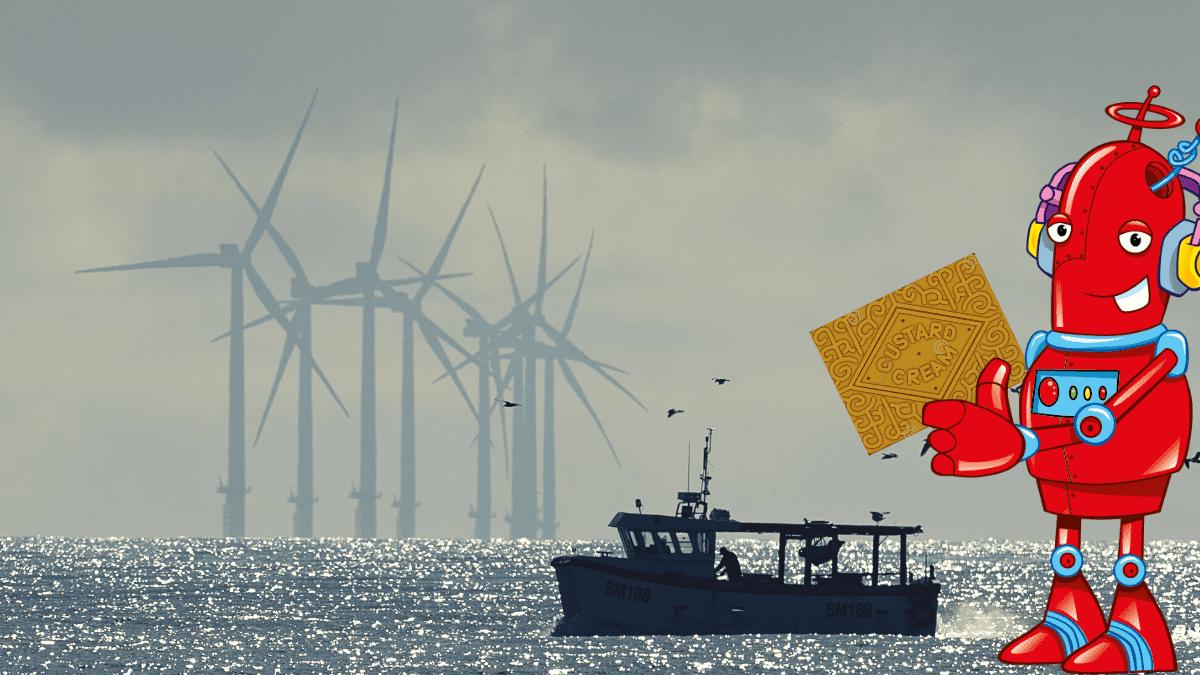In Sean’s Ships: Bringing the World Together, Sean and Robot are on a mission to sell custard creams across the world and with the help of the Captain, have been learning all about ships and world trade.
In this series of Sean’s Ships we’ve been learning all about international trade – that’s the way different countries exchange stuff. A bit like the way you might trade things with friends in Minecraft.
In this episode we learn how shipping can be more sustainable.
Did you know that over 90% of world trade is carried by some 90,000 ships? Although transporting goods by ship is less environmentally damaging than equivalent journeys by road or air, the scale of global shipping means that change is needed.
In addition, by 2050 the world’s population is projected to be over 9 billion which will mean more demand for food, jobs, energy and raw materials. Whilst the potential of the seas to help meet these requirements is huge, they are already under stress from over exploitation, pollution, declining biodiversity and climate change. So we need to be careful to increase the sustainability of the shipping economy while harnessing its benefits.
As well as using fossil fuels for power, ships produce carbon dioxide that contribute to climate change – 940 million tonnes every year – that’s 2% of the world’s total! Large ships use, on average, 150 tons of heavy fuel oil every day. Sometimes things go wrong and ships might spill oil into the sea damaging animals and plants that live there.

Another impact is water pollution. Ships use water as ballast to steady themselves, but this water can contain harmful substances. Cruise ships can also generate enough sewage to fill ten swimming pools.
Then there’s Noise Pollution. Noise produced by ships can travel long distances and harm marine animals who rely on sound to find food and communicate.
How can we make shipping better for the environment?
We can build better and more efficient ships such as lighter vessels using plastics instead of steel which will use less fuel. Then there’s technology that’s been around for centuries.

In the olden days the power of wind powered ships. Cutting-edge technologies are being developed that will once again harness wind power for a new generation of hybrid ships – this could include traditional-looking sails but using much lighter, more efficient fabrics; or more futuristic spinning cylinders mounted on the decks.
Don’t forget alternative sources of power – using electricity stored in batteries, hydrogen and even ammonia. Some ships are also switching to Liquified Natural Gas, which produces less air pollution.
When ships travel slower, they use less fuel and cut carbon emissions, so governments could introduce speed limits. Replacing traditional propellers so they rotate in different directions rather than being fixed in the same direction can improve efficiency by up to 15%. Engineers have found that cleaning hulls and painting them with low friction paint could save up to 5% on fuel efficiency.
Sean’s Ships – Bringing the World Together. With support from Lloyd’s Register Foundation.
Take the quiz below all about biscuits! Robot only got 3 correct. Can you beat him?
Add a commentSean’s Ships
How do ships work and why are there so many routes? Sean's exploring the history and science behind ships and international trade!
More From Sean’s Ships






